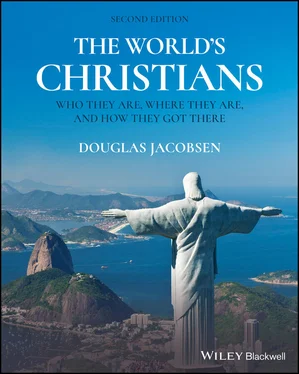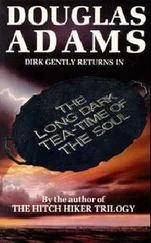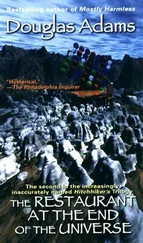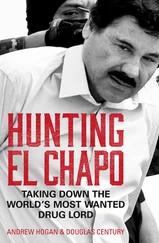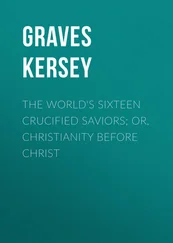Modern Catholicism: 1500 to the present
The last five centuries have brought both tremendous growth and frequent challenges to the Catholic Church. Even before 1500, Catholic Christianity had begun to expand beyond Europe and that expansion exploded in the sixteenth century. The Catholic monarchs of Spain and Portugal led the way with their colonization of the west coast of Africa and conquest of Latin America. New missionary orders were also created, most notably the Society of Jesus (the Jesuits), which introduced Catholicism to India and East Asia in the sixteenth and seventeenth centuries. But while Catholicism was expanding elsewhere, it was being challenged in Europe by the rise of the Protestant movement. Eventually about a third of the landmass of Western Europe and a sixth of its population would be won over by this new, alternative post‐Catholic Christian tradition.
The eighteenth century brought new challenges to Catholicism. The Enlightenment, the rise of modern science, and the beginnings of democratic politics began to undermine long‐held Catholic practices and beliefs. Anti‐Catholic sentiments fueled the French Revolution (1789). The Catholic Church regrouped under Pope Pius IX, who held office from 1846 to 1878, the longest papal reign in history. His famous Syllabus of Errors (1864) denounced almost everything modern about the modern world, including democracy, freedom of the press, and “secular” (non‐church‐controlled) public education. Ultimately, the public power of Catholicism declined both in Europe and elsewhere, but at the same time the power of the papacy within the Church dramatically increased. In 1800, the Pope directly appointed fewer than 5 percent of the Church’s bishops. Today, every Catholic bishop in the world is directly appointed by the Pope, and the Catholic Church is more centrally controlled than at any previous time in history.

Figure 2.5 The Gero Cross (pictured here) is the oldest known crucifix made in Western Europe north of the Alps. It is about six feet high and is displayed in the Cathedral Church of St. Peter in Cologne, Germany. DEA/N. CIRANI/Getty Images.
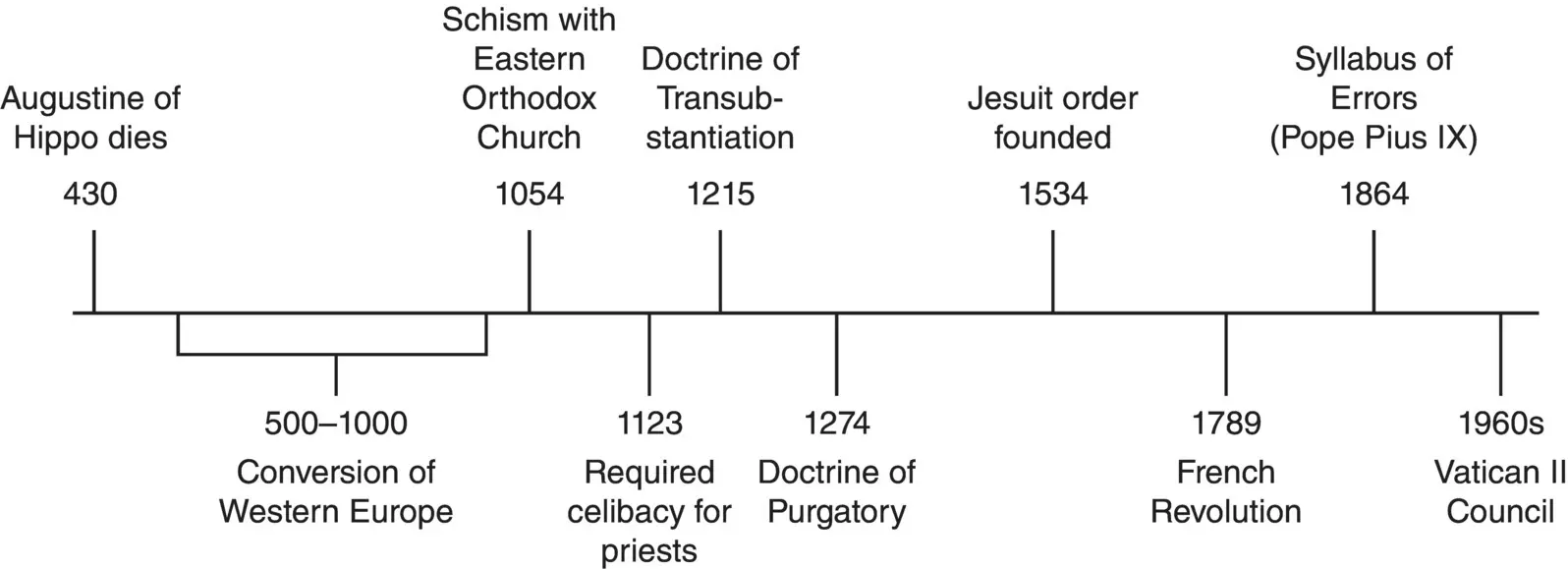
Figure 2.6 Timeline showing key events in Catholic history.
© John Wiley & Sons, Inc.
The authoritarian and antimodern posture that characterized the Catholic Church in the nineteenth century continued well into the twentieth century, when the new threat of atheistic Communism kept the Church on guard. Beneath the surface, however, new ideas about Catholic faith and life were being generated. Those new views were pushed to center stage in the early 1960s when Pope John XXIII convened the Second Vatican Council to reassess the place of Catholicism in the modern world. He believed the Church needed an aggiornamento (a major updating and reorientation), and he asked the council to provide the blueprint. Vatican II produced sixteen documents that did precisely what the Pope asked, but since then differing interpretations of these documents have produced a growing rift between more progressive and more conservative Catholics worldwide. In recent years, the Catholic Church has also been roiled by thousands of accusations of sexual abuse by priests and by evidence of widespread efforts on the part of bishops and other Church leaders to ignore or cover up this immoral behavior. This sex abuse crisis has undermined trust in the Catholic Church around the world and has placed the future of Catholicism itself in jeopardy. (See Figure 2.6for a timeline showing key events in Catholic history.)
SUGGESTIONS FOR FURTHER READING
1 Allen, John L., Jr. (2009). The Future Church: How Ten Trends Are Revolutionizing the Catholic Church. New York: Doubleday.
2 Bellitto, Christopher M. (2002). The General Councils: A History of the Twenty‐One Church Councils from Nicaea to Vatican II. Mahwah, NJ: Paulist Press.
3 Boekenkotter, Thomas (1990). A Concise History of the Catholic Church, revised and expanded. New York: Doubleday.
4 Buckley, James J., Frederick Christian Bauerschmidt, and Trent Pomplun (eds.) (2007). The Blackwell Companion to Catholicism. Oxford: Blackwell.
5 Faggioli, Massimo (2014). Sorting Out Catholicism: A Brief History of the New Ecclesiastical Movements. Collegeville, MN: Liturgical Press.
6 Greeley, Andrew (2000). The Catholic Imagination. Berkeley: University of California Press.
7 Linden, Ian (2009). Global Catholicism: Diversity and Change since Vatican II. New York: Columbia University Press.
8 O’Collins, Gerald, and Mario Farrugia (2003). Catholicism: The Story of Catholic Christianity. Oxford: Oxford University Press.
9 O’Grady, John F. (2001). Catholic Beliefs and Traditions: Ancient and Ever New. Mahwah, NJ: Paulist Press.
10 O’Malley, John W. (2008). What Happened at Vatican II. Cambridge, MA: Harvard University Press.
11 Reese, Thomas J. (1996). Inside the Vatican: The Politics and Organization of the Catholic Church. Cambridge, MA: Harvard University Press.
1 1Matthew Fox (ed.), Hildegard of Bingen’s Book of Divine Works with Letters and Songs (Santa Fe, NM: Bear and Company, 1987), pp. 8–10.
2 2Gerard Manley Hopkins, Poems of Gerard Manley Hopkins, 3rd ed. (New York: Oxford University Press, 1948), p. 70.
3 3Catechism of the Catholic Church (New York: Doubleday, 1995), p. 9.
4 4Ibid., pp. 673–4.
5 5Catherine of Siena, The Dialogue, trans. Suzanne Noffke (New York: Paulist Press, 1980), p. 35.
6 6Catechism of the Catholic Church, p. 352.
7 7Adapted from Andrew Greeley, The Catholic Imagination (Berkeley: University of California Press, 2001), pp. 89–90.
8 8Catechism, p. 254.
3 The Protestant Tradition
Protestantism is the most diverse of the four Christian traditions. Even a quick examination of global Protestantism reveals its astonishing variety. In settings ranging from small house churches in China, to huge megachurches in Nigeria, to ancient stone cathedrals in Great Britain, Protestants espouse an array of views regarding theology, ethics, styles of worship, and spirituality. Beneath all this diversity, however, Protestants share a common commitment to recovering and proclaiming what they see as the simple gospel of Jesus: by God’s grace, forgiveness and newness of life are available to everybody with nothing required but faith. Protestants believe that every person has direct access to God through Christ. This vision of faith marks Protestantism’s key difference from Orthodoxy and Catholicism. Its center of gravity lies in personal faith in God rooted in the Bible alone, rather than in the communal mediation of God’s grace to the individual through the church. With this switch of emphasis from the group to the individual, Protestantism brought Christianity into the modern world – or, perhaps more accurately, it helped to create the modern western world with its unique emphasis on the importance of the individual.
Protestants have a different approach to worship than either Orthodox or Catholic Christians. Worship is central to religious life for Catholics and Orthodox Christians; for Protestants it is not. When asked if it is possible to be a good Christian and not go to church, many Protestants would say “yes.” For Protestants, faith is embedded as much in the family, the marketplace, and the classroom as it is in the church – and Protestants often feel compelled to talk openly about their faith in these non‐churchly contexts. The church building itself is simply a place to meet, not a sacred temple. The mundane character of the church building is reflected in the fact that most Protestant churches are locked between services, while most Catholic and Orthodox churches have traditionally been open all day and night so people can enter to pray. Originally Protestant churches were locked precisely for this reason: to undercut the notion that prayers said in a church building are somehow more effective than prayers said elsewhere. For Protestants, God is equally available to everyone everywhere.
Читать дальше
